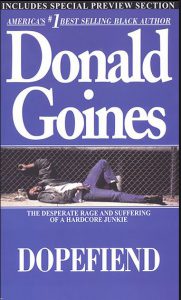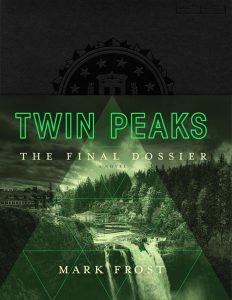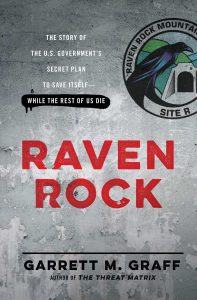Search the Blog
Categories
- Books & Reading
- Broadband Buzz
- Census
- Education & Training
- General
- Grants
- Information Resources
- Library Management
- Nebraska Center for the Book
- Nebraska Memories
- Now hiring @ your library
- Preservation
- Pretty Sweet Tech
- Programming
- Public Library Boards of Trustees
- Public Relations
- Talking Book & Braille Service (TBBS)
- Technology
- Uncategorized
- What's Up Doc / Govdocs
- Youth Services
Archives
Subscribe
Author Archives: Sam Shaw
Public Library Survey is Now Available
 While it doesn’t seem like it should be time yet, the public library survey is now available on Bibliostat. The survey runs from today (November 5, 2018) thru February 15, 2019, and covers the 2017-2018 fiscal year (typically either July 1, 2017 – June 30, 2018 or October 1, 2017 – September 30, 2018).
While it doesn’t seem like it should be time yet, the public library survey is now available on Bibliostat. The survey runs from today (November 5, 2018) thru February 15, 2019, and covers the 2017-2018 fiscal year (typically either July 1, 2017 – June 30, 2018 or October 1, 2017 – September 30, 2018).
A few things of note: We are now using a new version of Bibliostat. Multiple browsers are now supported, including Chrome. This also means we have a new link to the survey. There is a training guide for the new format on our website. If you need your password, or have questions about the survey, feel free to contact me. You can also enter your e-mail in the lost password part of our website.
For those of you who may be new to the survey, or if you want a refresher, check out the upcoming NCompass Live: Public Library Survey Using Bibliostat on November 28, 2018.
Posted in General, Library Management
Leave a comment
Friday Reads: Dopefiend
 For a little while, I have been thinking of reviewing an urban fiction book for Friday Reads. Not that I am an avid urban fiction reader, because I am not. But rather this is a specific genre of fiction that no one has ever reviewed on FR. Urban fiction, for me at least, is very difficult to read, but I finally made it through one to write about it here. First, a basic definition of urban fiction. Sometimes called “hood books” or “the good books”, urban fiction often tells stories of inner cities, typically graphic in nature and tackling issues of poverty, abuses (drug, domestic, and others), crime, hustling, and street life. A number of urban fiction books have been written by authors while in prison. The challenge here is that for me some urban fiction is just plain unreadable. I tried numerous books and did not get very far into them before giving up. Some examples: True to the Game series (didn’t make it to chapter 2), The Thug Series of books (I tried a few, including Every Thug Needs a Lady, Honor Thy Thug, and Justify My Thug), and the Girls From Da Hood series (I thought they must be decent because there are 13 of them – unfortunately in my opinion they weren’t readable). About to give up, I finally decided to try Donald Goines’ classic Dopefiend, published in 1971. While I made it through, I cannot say I would recommend it overall. However, it might serve a purpose in a scared straight sort of fashion, maybe to high school or college aged students.
For a little while, I have been thinking of reviewing an urban fiction book for Friday Reads. Not that I am an avid urban fiction reader, because I am not. But rather this is a specific genre of fiction that no one has ever reviewed on FR. Urban fiction, for me at least, is very difficult to read, but I finally made it through one to write about it here. First, a basic definition of urban fiction. Sometimes called “hood books” or “the good books”, urban fiction often tells stories of inner cities, typically graphic in nature and tackling issues of poverty, abuses (drug, domestic, and others), crime, hustling, and street life. A number of urban fiction books have been written by authors while in prison. The challenge here is that for me some urban fiction is just plain unreadable. I tried numerous books and did not get very far into them before giving up. Some examples: True to the Game series (didn’t make it to chapter 2), The Thug Series of books (I tried a few, including Every Thug Needs a Lady, Honor Thy Thug, and Justify My Thug), and the Girls From Da Hood series (I thought they must be decent because there are 13 of them – unfortunately in my opinion they weren’t readable). About to give up, I finally decided to try Donald Goines’ classic Dopefiend, published in 1971. While I made it through, I cannot say I would recommend it overall. However, it might serve a purpose in a scared straight sort of fashion, maybe to high school or college aged students.
Dopefiend tells the story of a group of addicts in an inner city (Detroit) in a raw and graphic manner. The story mostly follows the decline of the main character Terry, spiraling downward into the depths of her addiction. Most of the story is disturbing, following not only Terry but also the side characters Teddy, Minnie, Porky, Snake, and Dirty Red. The story involves numerous crimes to support their habits, lies and ruined relationships, exploitative drug dealers, and prostitution. For me it was reminiscent of parts of Requiem for a Dream (both movie and book). While the depiction in Requiem for a Dream consists of mostly white characters, the characters in Dopefiend are overwhelmingly African American. Dopefiend is uncomfortable on many levels. I will say that after trying to read contemporary urban fiction, which often glamorizes the life of the hustler, Goines paints an entirely darker and realistic picture in the opposite direction.
Goines, Donald (1971). Dopefiend: The Desperate Rage and Suffering of a Hardcore Junkie. Holloway House
Friday Reads: Petty: The Biography by Warren Zanes
 For years, I overlooked the simplicity and beauty of Tom Petty’s music. Some points of clarification at the outset: I would like to acknowledge the contribution of the Heartbreakers to Tom Petty, and it should be noted that the band (both collectively and individually) did a fair amount of side work, including backing Johnny Cash and the Travelling Wilburys (among other things). I owe it to my daughter (11-year old astrology expert and member of the counterculture) for my renewed interest in Petty, and the Heartbreakers. As a youngster, I never really listened to him much. Not that I had anything against him or his music, but I guess I just did not have the appreciation at that time. At any rate, the daughter, oddly and I’m not sure how, became a huge Petty fan. She likely was drawn to his simplicity, musical genius, and willingness to tell it like it is. Speaking of how Tom and the Heartbreakers got hooked up with Johnny Cash, Tom mentions that the band was interested in all forms of American music, pure forms that is, “not what they would call country today. What they would call country today is sort of like bad rock groups with a fiddle.” Tom and the Heartbreakers backed Cash on American II: Unchained. As much as I could go on about Cash, this little review today is about Petty, so let us steer back in that direction.
For years, I overlooked the simplicity and beauty of Tom Petty’s music. Some points of clarification at the outset: I would like to acknowledge the contribution of the Heartbreakers to Tom Petty, and it should be noted that the band (both collectively and individually) did a fair amount of side work, including backing Johnny Cash and the Travelling Wilburys (among other things). I owe it to my daughter (11-year old astrology expert and member of the counterculture) for my renewed interest in Petty, and the Heartbreakers. As a youngster, I never really listened to him much. Not that I had anything against him or his music, but I guess I just did not have the appreciation at that time. At any rate, the daughter, oddly and I’m not sure how, became a huge Petty fan. She likely was drawn to his simplicity, musical genius, and willingness to tell it like it is. Speaking of how Tom and the Heartbreakers got hooked up with Johnny Cash, Tom mentions that the band was interested in all forms of American music, pure forms that is, “not what they would call country today. What they would call country today is sort of like bad rock groups with a fiddle.” Tom and the Heartbreakers backed Cash on American II: Unchained. As much as I could go on about Cash, this little review today is about Petty, so let us steer back in that direction.
Petty, written by former Del Fuegos guitarist Warren Zanes, chronicles Tom’s upbringing, complete with an abusive alcoholic father in 1950’s working class Gainesville, FL. Arguably, the most difficult obstacle in Petty’s childhood was his lack of familial support for his interests and passion (music), but some might argue that being severely beaten around age 5 would be just as bad or worse. At any rate, Tom did not have an easy childhood, and while struggling through the monotony and boredom of school, he did get hooked up with other musicians, notably taking guitar lessons from Don Felder (the Eagles), forming various cover bands, and then the assembly of Mudcrutch. Most of the members of Mudcrutch subsequently became members of the Heartbreakers.
The account provided by Zanes relies on interviews from various people around the band and Petty himself. I think Tom wanted to tell his story, but felt the need to have it done independently, so that it seemed more credible. I can’t say I blame him, as I’ve often read autobiographies (especially by musicians) that come across as braggadocios, even if not intended. This one doesn’t play that way. Petty is such a likeable figure because of his honesty and humility. That is not to say that the duration of the Heartbreakers was without conflict, because it certainly was not. In addition to the Heartbreakers and various producers (notably Jimmy Iovine and Rick Rubin), numerous other prominent figures played a role in his life, such as (to name just a few) close friends Stevie Nicks, Jeff Lynne, Bruce Springsteen, and George Harrison. One of the reasons Petty has appeal (aside from his work with the Heartbreakers) is his work and friendship with these other musicians. For a nice little example of this, check out the performance at George Harrison’s induction into the Rock and Roll Hall of Fame (2004), and a cat named Prince who makes an appearance around 3:29.
Zanes of course also covers personal aspects of Petty’s life, including his relationship with his first wife, Jane Benyo, his kids, and his second wife, Dana York. Zanes also chronicles Tom’s depression and heroin use, and while that certainly is a large part of his story, it does not overwhelm the reader. It just seems to be an honest depiction and part of his story. As far as biographies go, this is one of the better ones.
Zanes, Warren. Petty: The Biography. 2016. Print.
2018 State Aid Letters Have Been Mailed
 The 2018 state aid calculations are now complete. State aid letters have been mailed and payments are in process. In the meantime, you can read (in general) about state aid and how it is distributed. Here is a list of the state aid distributions for 2018 (including this year’s formula). Finally, here is a link to a press release you can customize and use for your particular library.
The 2018 state aid calculations are now complete. State aid letters have been mailed and payments are in process. In the meantime, you can read (in general) about state aid and how it is distributed. Here is a list of the state aid distributions for 2018 (including this year’s formula). Finally, here is a link to a press release you can customize and use for your particular library.
Here is also a list of the libraries that will be receiving Dollar$ for Data payments. For those libraries, you are now eligible to apply for accreditation when the cycle opens this summer.
For libraries that aren’t accredited, now may be the time to consider the accreditation process, as you would then be eligible for state aid next year. You also need to submit your public library survey online via Bibliostat. The next public library survey collection cycle begins in November.
Posted in General, Library Management, Uncategorized
Leave a comment
2017 Public Library Survey Data is Now Available
 The 2017 public library survey data is now available on the NLC website. This is preliminary data (meaning that it has not yet been certified by IMLS) so keep in mind that it is subject to change. There is also a data dashboard that summarizes the data. Thanks to all of you who submitted your statistics. Historical data (back to 1999) is also available on our website. The next survey cycle begins in November, but you should be collecting those statistics now. If you are a new library director, check out the Bibliostat guide.
The 2017 public library survey data is now available on the NLC website. This is preliminary data (meaning that it has not yet been certified by IMLS) so keep in mind that it is subject to change. There is also a data dashboard that summarizes the data. Thanks to all of you who submitted your statistics. Historical data (back to 1999) is also available on our website. The next survey cycle begins in November, but you should be collecting those statistics now. If you are a new library director, check out the Bibliostat guide.
Friday Reads: Twin Peaks: The Final Dossier
 Last year saw the brilliant return of Twin Peaks season 3 on Showtime. For those of you who haven’t seen season 3 yet, I highly recommend it. However, it would be beneficial for you to review the first 2 seasons, which originally aired in 1990 and 1991. Yep, that’s correct, I’m recommending a TV series from the 90’s. Your local library or inter-library loan service should be able to net you the DVD’s (including season 3). A prequel movie, called Twin Peaks: Fire Walk With Me, is also beneficial before you swan dive into season 3. But today’s write up is about Twin Peaks: The Final Dossier, and not Twin Peaks the video series. While the author of the Final Dossier is Twin Peaks co-creator Mark Frost (the other co-creator is David Lynch), the book is written as a series of final FBI reports from the perspective of season 3 special agent Tammy Preston. I was surprised at the depth of Tammy’s reports. While I found Tammy’s character in season 3 to be a bit aloof (to put it mildly), not so in the case of the Final Dossier. She comes across as thorough, to the point, and witty in a Twin Peaks sort of way which is to say quite unconventional and refreshing.
Last year saw the brilliant return of Twin Peaks season 3 on Showtime. For those of you who haven’t seen season 3 yet, I highly recommend it. However, it would be beneficial for you to review the first 2 seasons, which originally aired in 1990 and 1991. Yep, that’s correct, I’m recommending a TV series from the 90’s. Your local library or inter-library loan service should be able to net you the DVD’s (including season 3). A prequel movie, called Twin Peaks: Fire Walk With Me, is also beneficial before you swan dive into season 3. But today’s write up is about Twin Peaks: The Final Dossier, and not Twin Peaks the video series. While the author of the Final Dossier is Twin Peaks co-creator Mark Frost (the other co-creator is David Lynch), the book is written as a series of final FBI reports from the perspective of season 3 special agent Tammy Preston. I was surprised at the depth of Tammy’s reports. While I found Tammy’s character in season 3 to be a bit aloof (to put it mildly), not so in the case of the Final Dossier. She comes across as thorough, to the point, and witty in a Twin Peaks sort of way which is to say quite unconventional and refreshing.
The Final Dossier focuses on some rather interesting things about the Twin Peaks townspeople, and specifically what’s happened to them over the past 25 years (the gap between seasons 2 and 3). These people include Shelley Johnson and Co., the Haywards, the Horne’s, the Hurley’s, Windom Earle, Dr. Jacoby, Harry, and Annie. I’m sure I’ve missed some. I’d say it was interesting to read more about these characters, but the ultimate question after watching the ending of season 3 is: What really happened? The Final Dossier does in fact shed some light on these philosophical tidbits, and confirms some thoughts and theories by including dossiers devoted to Major Briggs, Philip Jeffries, Judy, the log lady, and in a roundabout way other big league players such as the Fireman, BOB, and the Woodsmen. Cooper (both good Coop and evil Coop/Mr. C) and Diane are also spread throughout both of these narratives. Be prepared, as these things — both the book and TV series — include various dimensions, the supernatural, doppelgangers, alternate timelines and realities, and the omnipresent dream, which we may or may not live inside of. Or do we live inside of a dream of a dream? And as Twin Peaks asks, who is the dreamer?
Moving forward from that, I find it helpful to offer a brief sample so the reader of the review can get a flava for the writing style. In this case, thumbs up goes to this one:
“And even as we ‘wonder’ at what we’re doing here, so do we also fear – so deep down below the surface of our lives that few can bear to look at it – that life is a meaningless jest, an extravagant exercise in morbidity, a tale of sorrow and suffering lit by flashes, and made bearable only by moments of companionship and unsustainable joy. Along the way, as we struggle to come to terms and comprehend why this strange fate has befallen us, time becomes no longer our ally – the spendthrift assumption of our youth – but our executioner. It all feels at times like a merciless joke made at our expense, without our consent.”
While I’m now tempted to swing by the local library, grab some Sarte, head home and crank up some Joy Division on my home Hi-Fi, I think I’ll resist those urges. A final thought on the season 3 series that sums up its originality is evidenced by this brief video. And if that doesn’t make you want to watch the series or read the book, I don’t know what would. Maybe it just isn’t for you. But if it is, let me know so we can talk about theories, and we can certainly talk about Judy. Season 3 on DVD is now available.
Frost, Mark. Twin Peaks: The Final Dossier. New York: Flatiron Books, 2017. Print.
Friday Reads: The Long Haul
 If you are looking for a quick, easy, and entertaining read, The Long Haul might fit the bill. I chose to read it because I was interested in learning more about the life of a long haul trucker, how life on the road is for the drivers, and how they deal with all that traffic. While The Long Haul offers insight into those things, it also is a bit more than that. Author Finn Murphy has an entertaining way of telling stories. Murphy started as a mover, working for a small company in Connecticut. After a few years in college, he dropped out to work full time as a “bedbugger”, a long haul truck driver who moves people. Murphy aptly tells the trucker’s tales, but also describes the unique challenges associated with doing higher profile corporate moves. Some of the stories are comedic, some tragic, and others offer commentary on social classes. In many cases, Murphy describes the typical corporate client (highbrow) often treating the mover (perceived lowbrow) in a crappy way and the mover providing a subtle, but non-harming method of revenge.
If you are looking for a quick, easy, and entertaining read, The Long Haul might fit the bill. I chose to read it because I was interested in learning more about the life of a long haul trucker, how life on the road is for the drivers, and how they deal with all that traffic. While The Long Haul offers insight into those things, it also is a bit more than that. Author Finn Murphy has an entertaining way of telling stories. Murphy started as a mover, working for a small company in Connecticut. After a few years in college, he dropped out to work full time as a “bedbugger”, a long haul truck driver who moves people. Murphy aptly tells the trucker’s tales, but also describes the unique challenges associated with doing higher profile corporate moves. Some of the stories are comedic, some tragic, and others offer commentary on social classes. In many cases, Murphy describes the typical corporate client (highbrow) often treating the mover (perceived lowbrow) in a crappy way and the mover providing a subtle, but non-harming method of revenge.
I’d say Murphy is a more sophisticated individual (he listens to Fresh Air interviews by Terry Gross while on the road) although he is working in what is generally thought of as a lower brow job (moving home furnishings and driving a truck). But Murphy also describes the importance of manual labor, from both a societal and personal perspective. A relatable quote from The Long Haul: “Many young male neurotics find out early that hard labor is salve for an overactive mind.” I’d argue that this often applies to older individuals also, and not just males. Likewise, on the value of manual labor: “Hard work temporarily shut down the constant movie running in my brain that looped around in an endless cacophony of other people’s expectations, obligation, guilt, anger, and rebellion.” I feel the same way about manual labor, but would add that reading a book or doing something relaxing like having a drink and watching birds, butterflies, or flowers equally works to dampen these things down. But I think I’d say rather simply that those things are just good for the soul.
The Public Library Survey is Now Available
 The annual (2016-2017 fiscal year) IMLS public library survey (submitted via Bibliostat) is now available. The survey deadline is February 16, 2018. Completion of the survey is required for your library to receive state aid if you are accredited. If you aren’t accredited, you still have an incentive to complete the survey ($200), called Dollar$ for Data.
The annual (2016-2017 fiscal year) IMLS public library survey (submitted via Bibliostat) is now available. The survey deadline is February 16, 2018. Completion of the survey is required for your library to receive state aid if you are accredited. If you aren’t accredited, you still have an incentive to complete the survey ($200), called Dollar$ for Data.
Please feel free to contact me if you have any questions throughout the process. You can always start the survey, save your submissions, and then resume at a later date. It doesn’t have to all be done at once. Tip: It’s always a good idea to click on the red “save” button in Bibliostat before clicking “next” to the next screen. Thank you in advance for your participation.
Friday Reads: Raven Rock
 I had high expectations for Raven Rock: The Story of the U.S. Government’s Secret Plan to Save Itself—While the Rest of Us Die. I became interested in the book after listening to an engaging interview with the author, Garrett Graff, on NPR’s Fresh Air. Unfortunately, the book didn’t live up to my expectations. Don’t get me wrong, there is some good stuff here. But generally I found the middle part of the book to be a repetitive bore. Raven Rock picks up during World War II, when the U.S. was heading full throttle into the atomic age, with Harry S. Truman President of the United States. While there are many facets to Raven Rock, Graff primarily describes the aftermath of the atomic bomb deployment prior to the cold war, subsequent U.S. government preparations for doomsday, and other disaster planning. The book provides a chronology by each president after Truman. I found the first few chapters to be of interest (Truman and Eisenhower), then the beginning of aforementioned lackluster, drawn out, and sleepy sections, then heating up again around September 11, 2001 (Bush 43).
I had high expectations for Raven Rock: The Story of the U.S. Government’s Secret Plan to Save Itself—While the Rest of Us Die. I became interested in the book after listening to an engaging interview with the author, Garrett Graff, on NPR’s Fresh Air. Unfortunately, the book didn’t live up to my expectations. Don’t get me wrong, there is some good stuff here. But generally I found the middle part of the book to be a repetitive bore. Raven Rock picks up during World War II, when the U.S. was heading full throttle into the atomic age, with Harry S. Truman President of the United States. While there are many facets to Raven Rock, Graff primarily describes the aftermath of the atomic bomb deployment prior to the cold war, subsequent U.S. government preparations for doomsday, and other disaster planning. The book provides a chronology by each president after Truman. I found the first few chapters to be of interest (Truman and Eisenhower), then the beginning of aforementioned lackluster, drawn out, and sleepy sections, then heating up again around September 11, 2001 (Bush 43).
I think one of the challenges for Graff was getting his hands on information that wasn’t classified. This might explain why the reader has chapter after chapter devoted to the 50’s and 60’s time period, yet less than 2 pages devoted to President Clinton. Raven Rock, named after the massive Raven Rock Mountain Complex (also known as Site R), is an underground military nuclear bunker carved into the area’s greenstone granite, and located about 6 miles north of Camp David. It is basically an underground city, complete with offices, communications centers, bomb blast doors, dining facilities, an infirmary, bathrooms, etc. Speaking of Camp David, Graff provides an interesting narrative about the history of it (formerly known as Shangri-La). One of the appealing aspects of Raven Rock is these sorts of anecdotes, and I wish Graff devoted more attention to them. A few highlights include Graff’s descriptions of code names used for government officials and their family members, and the challenge to deciphering them on radio transmissions. Example: “Volunteer will reside at VALLEY for an indefinite time. I repeat: VOLUNTEER will reside at VALLEY for an indefinite time. VICTORIA requests that VENUS will go to VALLEY with agent” actually meant that Lyndon Johnson (VOLUNTEER) will reside at his private residence at The Elms (VALLEY), and Lady Bird (VICTORIA) requests that Luci (LBJ’s daughter, VENUS) will go to The Elms (VALLEY) with an agent. Also, the fact that up until at least 1910, tourists could sit at the president’s desk in the White House, and as Vice President, Lyndon Johnson’s phone number was listed in the phone book. Another anecdote describes a curious exchange between Chief Justice Earl Warren and officials who distributed a Mt. Weather entrance ID card to him but not Mrs. Warren. In our self-centered world of today, you have to appreciate the Chief’s returning the card, sarcastically saying:
“Then I suppose I should call my wife and say, ‘Honey, there is an atomic bomb attack to be made on Washington, and I am flying to safety in Appalachia. Sorry I don’t have time to come home and say good-bye, but it was nice to have met you.'”
Raven Rock is one of a number of emergency operations centers for the government, along with Mount Weather in Virginia, and Cheyenne Mountain in Colorado. But Graff’s Raven Rock is about much more than the construction and maintenance of these facilities; it’s about government disaster, succession, and “COG” or continuity of government planning — the principle that government continues to operate in the case of a catastrophic event. Granted most of this centers around the cold war, but on September 11, 2001, it took a much different turn. As Graff points out, September 11 exposed a clustered mess of communications problems and other assorted government disarray. Graff also devotes quite a bit of attention to the nuclear “football”. While the football doesn’t explicitly contain launch codes, “one military aide compared it to a Denny’s menu. You can go through and point at different pictures and that’s the type of nuclear war you would order. …”
All in all, Graff provides an interesting narrative of how the government’s plans have evolved over time to adequately handle these sorts of real and potential doomsday type disasters. Graff points out some of these failures along the way, but also interesting facts that most readers likely are unaware of. Just skip the middle third of the book.
Public Library Survey Tip No. 6
 Today marks the end of the Bibliostat tip series. We will focus on the federal question of capturing and reporting the number of Wi-Fi sessions your library has in the reporting period (your fiscal year). The idea behind this is that communities may lack areas providing free Wi-Fi, and the local public library often fills that gap. The difficulty lies with how to accurately capture this data, especially in smaller libraries that lack full time IT tech support. Real time technical solutions do exist, but for most these aren’t practical. Today I’ll offer you a simple potential solution to more accurately capture a representative sample of who is using your Wi-Fi. As most of you know, data for the public library survey is sometimes estimated from captured data from an “average week”. In other words, you take a representative sample during a typical time period (e.g. for the number of library visitors you count everyone during a week in the spring, summer, fall, and winter) and then you do a bit of math to get the reported annual figures.
Today marks the end of the Bibliostat tip series. We will focus on the federal question of capturing and reporting the number of Wi-Fi sessions your library has in the reporting period (your fiscal year). The idea behind this is that communities may lack areas providing free Wi-Fi, and the local public library often fills that gap. The difficulty lies with how to accurately capture this data, especially in smaller libraries that lack full time IT tech support. Real time technical solutions do exist, but for most these aren’t practical. Today I’ll offer you a simple potential solution to more accurately capture a representative sample of who is using your Wi-Fi. As most of you know, data for the public library survey is sometimes estimated from captured data from an “average week”. In other words, you take a representative sample during a typical time period (e.g. for the number of library visitors you count everyone during a week in the spring, summer, fall, and winter) and then you do a bit of math to get the reported annual figures.
So the question really is how you more accurately get this sample for Wi-Fi uses? And what about the kids in the parking lot that are using your Wi-Fi? Some libraries have taken to following people around to see if they have a laptop, tablet, or smartphone, and then recording that data (called an “observation estimate”), but who really wants to do that (and it might be more than a bit creepy depending on the circumstances). So here is another option. If you have an android or apple device (e.g. smartphone) capturing these representative samples just got a little easier and a little more accurate, but it does take a bit of work during your sample time period. First, you need to get an app that tells you what devices are connected to your Wi-Fi at a particular point in time. You could search the App Store (Apple) or the Play Store (Android) at length for network scanners or terms such as who is using my Wi-Fi, but I’ll give you a couple of apps that are available for free and work fairly well. These are Fing and EZ Net Scan. In no way am I endorsing these over others; these are just two examples. You should try some out and see what might fit your needs. Downloading these apps offers you the ability, when you are connected to the library Wi-Fi, to see all the other devices that are connected to the same Wi-Fi network. So ideally you would start at a particular point in time, write down the IP addresses for the connected devices, and then re-scan every so often (say every 15-30 minutes) to see if any new devices are connected, or if a device drops connections. Once you collect the data during the sample time period, you just do your math to get an annual figure. Worst case scenario is that you capture data for a typical day and then multiply by the number of days in a year you are open. Better case is that you take a sample for a defined time period, such as a typical day during each of the four seasons (spring, summer, winter, and fall). Shaka.
Posted in General, Information Resources, Library Management, Uncategorized
Tagged Bibliostat, Public library survey
1 Comment
Public Library Survey Tip No. 5
 Shaka. There are two more installments in this series of Bibliostat tips, and both will focus on library technology. Today we will take a look at internet connections and speed. There are two relevant questions: (1) What is the type of your internet connection; and (2) What is your download speed. For the type of your connection, if you don’t know, you will need to ask your internet service provider (ISP) to confirm. These are things like DSL, Cable, Fiber Optic, Satellite, etc. The trickier part to the survey is reporting your download speed, because there are a variety of factors that could affect your speed test. There are a number of different websites and online tools to measure your speed, but we like to recommend the NDT (Network Diagnostic Tool). Completing a test is easy by going to this site and clicking on “Start Test”. After a few minutes, a report will kick out that will tell you what your download speed is. A few things to keep in mind: It’s best to do a test at various times during an “average day”. If you only do one test or test at the same time every day, you are not likely to get an accurate sample of your actual speed. Also, try and perform tests both from your Wi-Fi and over a wired connection, as there might be some variance between the two. When you do multiple tests, report the average speed.
Shaka. There are two more installments in this series of Bibliostat tips, and both will focus on library technology. Today we will take a look at internet connections and speed. There are two relevant questions: (1) What is the type of your internet connection; and (2) What is your download speed. For the type of your connection, if you don’t know, you will need to ask your internet service provider (ISP) to confirm. These are things like DSL, Cable, Fiber Optic, Satellite, etc. The trickier part to the survey is reporting your download speed, because there are a variety of factors that could affect your speed test. There are a number of different websites and online tools to measure your speed, but we like to recommend the NDT (Network Diagnostic Tool). Completing a test is easy by going to this site and clicking on “Start Test”. After a few minutes, a report will kick out that will tell you what your download speed is. A few things to keep in mind: It’s best to do a test at various times during an “average day”. If you only do one test or test at the same time every day, you are not likely to get an accurate sample of your actual speed. Also, try and perform tests both from your Wi-Fi and over a wired connection, as there might be some variance between the two. When you do multiple tests, report the average speed.
The takeaway from collecting this data on your end is that you have a more accurate picture of what speed you are offering compared to what you are actually paying for. Secondly, the speed tests might flag other network issues that you need to look into. For instance, if your wired speed is consistently 60 Mbps, and your Wi-Fi speed lags far behind that, then you might have issues that need to be investigated (such as your Wi-Fi router, it’s range, or some other issue). Finally, measuring your speed is helpful as a comparison tool; you can compare what your library offers compared to your peer libraries.
Posted in General, Library Management, Uncategorized
Tagged Bibliostat, Public library survey
Leave a comment
Public Library Survey Tip No. 4
 Shaka. Today’s public library survey data collection tip (part 4) takes a look at library collections and databases (or “electronic collections”). For those of you who subscribe to local databases or have vendors other than Nebraska OverDrive, this can be a difficult task. But if you only have Nebraska OverDrive here’s the good news: We pull the data for those holdings and circulations and prefill it on your survey. Recently, the survey has been redesigned so that for eBooks, Audiobooks, and downloadable video you only report current holdings. No more of that eBooks added and deleted business.
Shaka. Today’s public library survey data collection tip (part 4) takes a look at library collections and databases (or “electronic collections”). For those of you who subscribe to local databases or have vendors other than Nebraska OverDrive, this can be a difficult task. But if you only have Nebraska OverDrive here’s the good news: We pull the data for those holdings and circulations and prefill it on your survey. Recently, the survey has been redesigned so that for eBooks, Audiobooks, and downloadable video you only report current holdings. No more of that eBooks added and deleted business.
On the survey there are sections for reporting eBooks, Audiobooks, downloadable video titles, and databases/electronic collections. If you subscribe to a service or have a vendor other than Nebraska OverDrive, how do you determine where to report that service/vendor and the number of uses? It depends, but the key question here is: Do the items circulate for a set period, or are they permanently retained by the patron? If they circulate for a set period, then you report in two areas: (1) the library collections portion of the survey (under eBooks, Audiobooks, and downloadable video); and (2) the circulation portion of the survey (adult or children’s). Sometimes, vendors offer a package of items that the library does not select, and that are paid for based on their selection by the patron. For these, you report the number of times the item was selected by the patron, both as holdings and circulation. Sometimes it can be difficult to ascertain whether or not the circulation was children’s or adult. If in doubt, or it isn’t clear, we suggest reporting it under the adult category.
If items are permanently retained by the patron, count each vendor as one local database and report the number of uses (generally this would be a download or a stream in the case of audio or video). Finally, our survey is set up for databases as a repeating group, so we first ask how many total local databases you subscribe to, then we ask you to name each one and report the number of times it was used. To illustrate, say that you have 3 local databases (Example: Zinio, Freegal, and Mango Languages). You first enter the name of the first database (Zinio), and then enter the number of times it was used, then click on Save, then click Add Group to enter the next database (Freegal) and its number of uses.
Posted in General, Library Management, Uncategorized
Tagged Bibliostat, Public library survey
Leave a comment
Public Library Survey Tip No. 3
 Today we have part 3 in our public library survey data collection series. We will focus on expenditures. First off, for this survey you report what you actually spent in the listed categories. Most of the time, this is different than the amount that was budgeted. As such, your reported expenditures shouldn’t be nice round numbers, and should be at least slightly different than what you reported last year. A common issue that arises is the reporting of expenditures for employee benefits. The employee benefit expenditure includes things such as payments for health insurance and retirement, but also social security and FICA (Federal Insurance Contributions Act). This is a bit confusing because FICA typically includes both Social Security and Medicare. In the category, you need to report all of these payments, and the only way it can be a $0 is if you are paid as an independent contractor. If that’s the case, and rarely but sometimes it is, then enter “librarian is paid as an independent contractor” in the note field on the survey because this will undoubtedly come up on an edit check. A few other items of note about expenditures:
Today we have part 3 in our public library survey data collection series. We will focus on expenditures. First off, for this survey you report what you actually spent in the listed categories. Most of the time, this is different than the amount that was budgeted. As such, your reported expenditures shouldn’t be nice round numbers, and should be at least slightly different than what you reported last year. A common issue that arises is the reporting of expenditures for employee benefits. The employee benefit expenditure includes things such as payments for health insurance and retirement, but also social security and FICA (Federal Insurance Contributions Act). This is a bit confusing because FICA typically includes both Social Security and Medicare. In the category, you need to report all of these payments, and the only way it can be a $0 is if you are paid as an independent contractor. If that’s the case, and rarely but sometimes it is, then enter “librarian is paid as an independent contractor” in the note field on the survey because this will undoubtedly come up on an edit check. A few other items of note about expenditures:
- For library materials in electronic format, you report expenditures for eBooks, Audiobooks, e-serials (electronic journals), databases, electronic maps, downloadable videos, and pictures in electronic or digital format;
- Other materials expenditures includes physical items that aren’t books. These typically are DVD’s, CD’s, microfilm, and other things like cake pans, puzzles, games, puppets, toys, and art;
- Capital expenditures should match or come close to matching what you report in capital revenue. However, keep in mind that sometimes funds are allocated in the previous fiscal year, so the capital revenue was reported on last year’s survey even though the expenditure is reported on the current survey;
- Capital expenditures are “major one time projects”, and examples include: (a) site acquisitions; (b) new buildings; (c) additions to or renovation of library buildings; (d) furnishings, equipment, and initial book stock for new buildings, building additions, or building renovations; (e) library automation systems (initial purchase of); (f) new vehicles; and (g) other one-time major projects. Examples include new roofs, new carpet, new windows, sidewalks, etc.; and
- There sometimes is confusion about what to report as computer hardware, accessories, and software and “electronic access”. These are two different categories. For electronic access, you report maintenance or consortium fees association with your integrated library system or costs associated with accessing the internet. For the computer part (hardware, accessories, and software), you report items that are for both staff and public use.
Shaka.
Posted in General, Library Management, Uncategorized
Tagged Bibliostat, Public library survey
Leave a comment
Public Library Survey Tip No. 2
 Part 2 in our public library survey data collection series takes programming a step further, focusing specifically on children’s and young adult programs. Reporting these programs can be a bit tricky, mostly because of difficulty in determining which category to count the program. Taking into consideration the fact that some of these programs may overlap and actually draw persons from both the children’s and young adult age groups, you might need to make a determination of what category to put your program in based on the nature of the program. Specifically, what is the primary intended audience? Children (for purposes of this survey) are defined as persons age 11 and under. Young adults (for purposes of this survey) are defined as persons age 12 to 18. Here is your extended cheat sheet:
Part 2 in our public library survey data collection series takes programming a step further, focusing specifically on children’s and young adult programs. Reporting these programs can be a bit tricky, mostly because of difficulty in determining which category to count the program. Taking into consideration the fact that some of these programs may overlap and actually draw persons from both the children’s and young adult age groups, you might need to make a determination of what category to put your program in based on the nature of the program. Specifically, what is the primary intended audience? Children (for purposes of this survey) are defined as persons age 11 and under. Young adults (for purposes of this survey) are defined as persons age 12 to 18. Here is your extended cheat sheet:
- Story times and summer reading events should be counted as programs;
- Do NOT count library services that are provided on a one-on-one basis (such as computer assistance or one-on-one homework help);
- Count programs that the library either sponsors or co-sponsors;
- Count programs even if they are held off-site (not at the library);
- If a program is offered in a series, count each program in the series (e.g. if you have a discussion group that meets 6 times, that counts as 6 programs); and
- IMPORTANT: For children’s program attendance – “Include adults who attend programs intended primarily for children.” And: For young adults – “Please count all patrons that attend the young adult programs regardless of age.”
Shaka.
Posted in General, Library Management, Uncategorized
Tagged Bibliostat, Public library survey
Leave a comment
Public Library Survey Tip No. 1
 Today marks the start of a multi-part weekly series of tips for collecting data for your next public library survey using Bibliostat. Yes, I know, it seems like this survey just ended, and it did, but you should be collecting your data now for input into the next survey when the cycle begins this coming November. Keep in mind that the next survey covers the time period of your library’s fiscal year, which in most cases is either October 1 to September 30 OR July 1 to June 30. A few libraries have fiscal years that run from January 1 to December 31. A quick reminder about terminology: Bibliostat is the vendor that we use to collect the data, but the survey itself is the IMLS public library survey. Today’s post will focus on programs in general. Most of you know what a library program is, but to clarify what you count for a program on this survey, here is the definition:
Today marks the start of a multi-part weekly series of tips for collecting data for your next public library survey using Bibliostat. Yes, I know, it seems like this survey just ended, and it did, but you should be collecting your data now for input into the next survey when the cycle begins this coming November. Keep in mind that the next survey covers the time period of your library’s fiscal year, which in most cases is either October 1 to September 30 OR July 1 to June 30. A few libraries have fiscal years that run from January 1 to December 31. A quick reminder about terminology: Bibliostat is the vendor that we use to collect the data, but the survey itself is the IMLS public library survey. Today’s post will focus on programs in general. Most of you know what a library program is, but to clarify what you count for a program on this survey, here is the definition:
A program is any planned event which introduces the group attending to any of the broad range of library services or activities or which directly provides information to participants.
Now that is pretty broad, so here is your cheat sheet:
- Library tours can be counted as programs;
- Examples of some programs include film showings, lectures, story hours, English and citizenship classes, and book discussion groups;
- Do NOT count library services that are provided on a one-on-one basis (such as computer assistance or one-on-one homework help);
- Count programs that the library either sponsors or co-sponsors;
- Count programs even if they are held off-site (not at the library); and
- If a program is offered in a series, count each program in the series (e.g. if you have a discussion group that meets 6 times, that counts as 6 programs).
As always, if you have any questions about what to count or not count, feel free to let me know. Next week we will expand on the program counts to include specific children’s and young adult programs. One final note, if you might not have been counting some programs you should have been counting, and now you are, your count will likely increase from what was reported in the prior year’s survey. If this is the case, it might trigger an edit check in Bibliostat. This means that you will need to enter a note in the note field explaining the increase (or decrease). It is perfectly acceptable to put something in that field such as “we did not count programs held off site last year, and this year we did”. Shaka.
Posted in General, Information Resources, Library Management, Uncategorized
Tagged Bibliostat, Public library survey
Leave a comment
2016 Fiscal Year Data is Now Available
 The 2016 public library survey data is now available on the NLC website. This is preliminary data (meaning that it has not yet been certified by IMLS) so keep in mind that it might be subject to change. There is also a data dashboard that summarizes the data. Thanks to all of you who submitted your statistics. Historical data (back to 1999) is also available on our website. The next survey cycle begins in November, but you should be collecting those statistics now. If you are a new library director, check out the Bibliostat guide.
The 2016 public library survey data is now available on the NLC website. This is preliminary data (meaning that it has not yet been certified by IMLS) so keep in mind that it might be subject to change. There is also a data dashboard that summarizes the data. Thanks to all of you who submitted your statistics. Historical data (back to 1999) is also available on our website. The next survey cycle begins in November, but you should be collecting those statistics now. If you are a new library director, check out the Bibliostat guide.
State Aid Letters Have Been Mailed
 The 2017 state aid calculations are now complete. State aid letters have been mailed and payments are in process. In the meantime, you can read (in general) about state aid and how it is distributed. Here is a list of the state aid distributions for 2017 (including this year’s formula). Finally, here is a link to a press release you can customize and use for your particular library.
The 2017 state aid calculations are now complete. State aid letters have been mailed and payments are in process. In the meantime, you can read (in general) about state aid and how it is distributed. Here is a list of the state aid distributions for 2017 (including this year’s formula). Finally, here is a link to a press release you can customize and use for your particular library.
For those libraries that aren’t accredited, now may be the time to consider the accreditation process, as you would then be eligible for state aid next year. You also need to submit your public library survey online via Bibliostat. The accreditation process starts later this summer, and the next public library survey collection cycle begins in November.
Posted in General, Library Management, Uncategorized
Leave a comment
Friday Reads: Call if You Need Me
 My original intention was to write about a big wave surfing book I recently picked up from my local library. This likely would have been more exciting than Raymond Carver. However, as I trekked successfully through 3/4’s of the big wave surf book (for me, this is an accomplishment), it soured. Maybe another day or another surfer. I’ve been looking for something on Kelly Slater, not only the most dominant surfer to date, but arguably the most dominant athlete ever. For those of you who like infographics, ahem, I mean data visualizations, check this one out – it’s among the best.
My original intention was to write about a big wave surfing book I recently picked up from my local library. This likely would have been more exciting than Raymond Carver. However, as I trekked successfully through 3/4’s of the big wave surf book (for me, this is an accomplishment), it soured. Maybe another day or another surfer. I’ve been looking for something on Kelly Slater, not only the most dominant surfer to date, but arguably the most dominant athlete ever. For those of you who like infographics, ahem, I mean data visualizations, check this one out – it’s among the best.
I picked up Call if You Need Me, a collection of short stories, essays, and book reviews by Raymond Carver, published posthumously, and finished the bulk of it on a rain suffused weekend, reading mostly while simultaneously standing and hopped up because of a neck injury. I skipped the book reviews within Call if you Need Me. Reading Carver is a lot like watching an episode of Mad Men. On the surface things seem quite normal and ordinary, but in reality that is far from the truth. Having read a few of Carver’s other works in the past, this is familiar territory, and the short stories in Call if You Need Me were interesting and easy to read. If anything, I’d say they were a little less miserable (and slightly less humorous) than Carver’s other works. The short stories are flooded with the imperfect, often despair ridden world we live in; a world many of us have experienced firsthand one way or another. There is a prevalence of alcoholism, divorce, and depression, but also humor, hope, and a sense of contentedness that we often lack. I enjoyed reading about the timeline of Carver’s life — writing short stories late at night out of necessity because he had two kids at a young age, being poor, his literary influences, childhood, and the eventual successful sales of his work. If you haven’t read any Carver, I recommend you give him a try. The fact that these are short stories (as most of Carver’s other works are) means that there is little investment on your part.
The Public Library Survey is due Friday, Feb. 17, 2017
 It’s crunch time for the annual IMLS public library survey (submitted via Bibliostat). The survey deadline is February 17, 2017. Completion of the survey is required for your library to receive state aid if you are accredited. If you aren’t accredited, you still have an incentive to complete the survey ($200), called Dollar$ for Data.
It’s crunch time for the annual IMLS public library survey (submitted via Bibliostat). The survey deadline is February 17, 2017. Completion of the survey is required for your library to receive state aid if you are accredited. If you aren’t accredited, you still have an incentive to complete the survey ($200), called Dollar$ for Data.
Please feel free to contact me if you have any questions, and thank you in advance for your participation.
Posted in General, Library Management, Uncategorized
Leave a comment
LSTA 5-Year Evaluation Survey
 Every five years the Nebraska Library Commission is required to conduct an evaluation of its implementation of the Library Services and Technology Act (LSTA) “Grants to States” program. The LSTA Grants to States Program is a federal program that provides funding to each state based on a population‐driven formula. Decisions regarding how these funds are spent are made at the state level; however, expenditures must be consistent with the purposes and priorities that are established nationally.
Every five years the Nebraska Library Commission is required to conduct an evaluation of its implementation of the Library Services and Technology Act (LSTA) “Grants to States” program. The LSTA Grants to States Program is a federal program that provides funding to each state based on a population‐driven formula. Decisions regarding how these funds are spent are made at the state level; however, expenditures must be consistent with the purposes and priorities that are established nationally.
As part of our evaluation, if you have not done so already, we are asking those we serve to answer a short survey designed to gather information about the impact that our LSTA‐funded programs and services have had on individuals and libraries in Nebraska. This is your opportunity to give us some feedback about how the Library Commission’s activities have affected your ability to provide quality library service. Please help us by answering the survey by February 10, 2017. Here is the link:
https://www.surveymonkey.com/r/BPT6H2Q
Thank you for your involvement in this important evaluation!
Posted in General, Library Management, Uncategorized
Leave a comment

